Words: Lester Perry
Photography: Cameron Mackenzie
Produced in partnership with Christchurch NZ
Circumnavigating a peninsula is a unique experience – with the perfect example of this being Banks Peninsula, on the east coast of the South Island. With its rich history, exquisite landscapes and easy access from Christchurch, Banks Peninsula is a particularly enticing destination.
We mapped out a three-day route, ensuring we’d take in as much as we could of this volcanic, remote, rugged, stunningly beautiful (and bloody hilly!) peninsula. Travelling on two wheels meant we could take in our surrounds at a slower pace and really connect with the whenua, and the characters we might meet along the way. The hectic rhythm of regular life quickly goes out the window when you narrow your focus to just riding from point to point; eat, stay, sleep, and then repeat.
Before venturing out to the Peninsula, it’s important to learn a little about its iconic history. Māori tradition recognises three waves of ancient settlement on Banks Peninsula. The first wave of Māori settlers to the area now known as Banks Peninsula, were the Waitaha – led by their founding ancestor, Rākaihautū. The Māori name for the peninsula is Te Pātaka o Rākaihautū (The Storehouse of Rākaihautū) in recognition of his deeds and the abundance of mahinga kai (foods of the forests, sea, rivers, and skies). The second wave were ‘Te Tai Roa’ from the settlement of Ngati Mamoe (the descendants of Hotu Mamoe) who occupied and dominated the southern isle for a lengthy period. Ngāi Tahu was the third and most recent wave, in the 17th century. Virtually every bay on the Peninsula had its settlement, and trading and cultural links were maintained with other Māori settlements throughout the South Island, including Kaiapoi, Temuka, Otakou and Kaikoura.
In 1770, the first Europeans to lay eyes on the Peninsula, were the crew of Captain James Cook, during Cook’s first circumnavigation of New Zealand. Cook mistook it for an island and named it ‘Banks Island’, in honour of Endeavour’s on-board botanist, Joseph Banks. Cook didn’t bother to explore the land closely and instead just sailed away. By the 1830’s, Banks Peninsula had become a European whaling centre. In 1838, Captain Langlois, a French whaler, thought Akaroa would make a good settlement to service whaling ships, so he purchased the Peninsula in a land deal with local Māori, then returned to France. He had the intention of forming a French colony when he came back to Akaroa. Unfortunately, just before he returned in 1840, Te Tiriti O Waitangi (The Treaty of Waitangi) was signed, giving the English sovereignty over New Zealand.
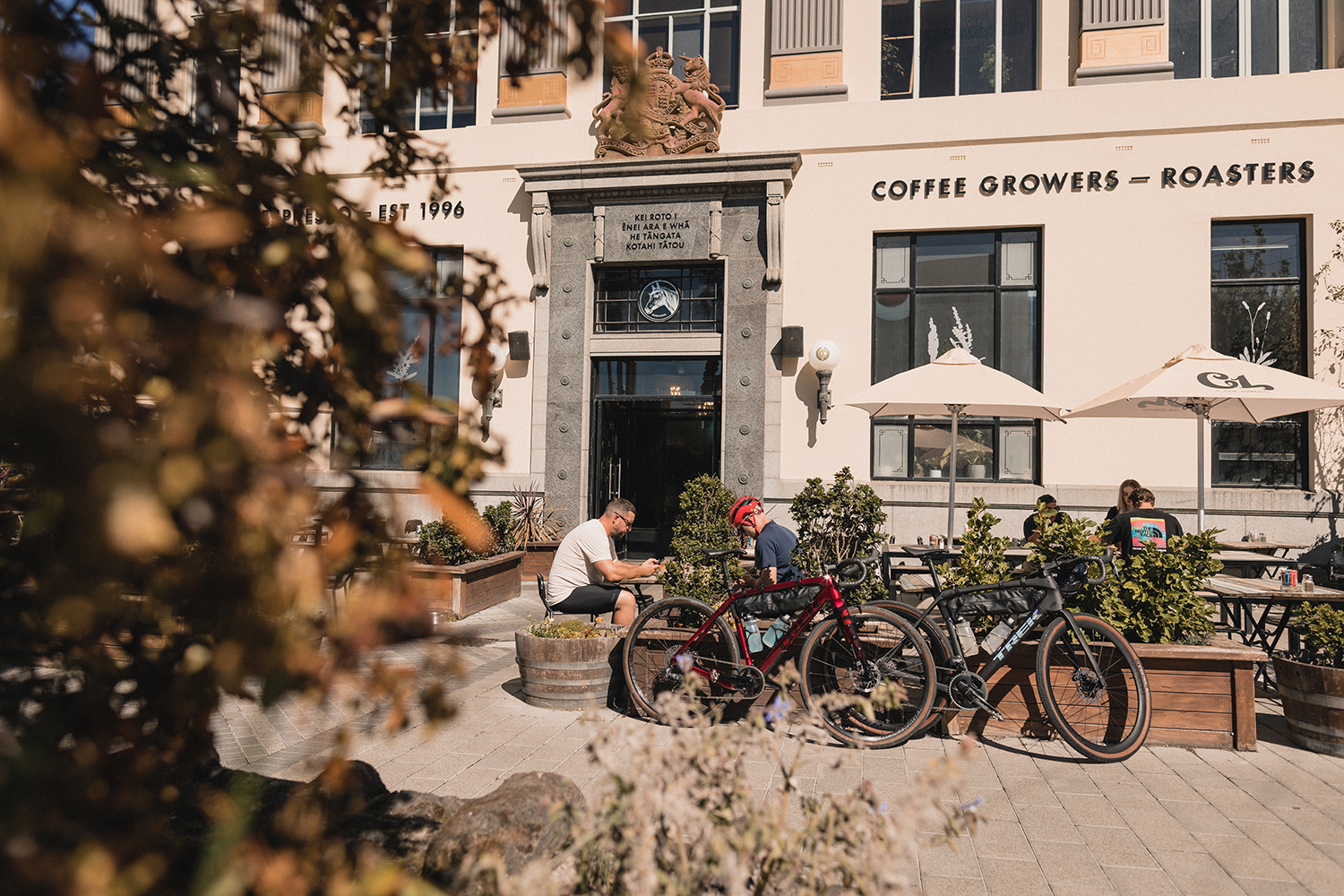
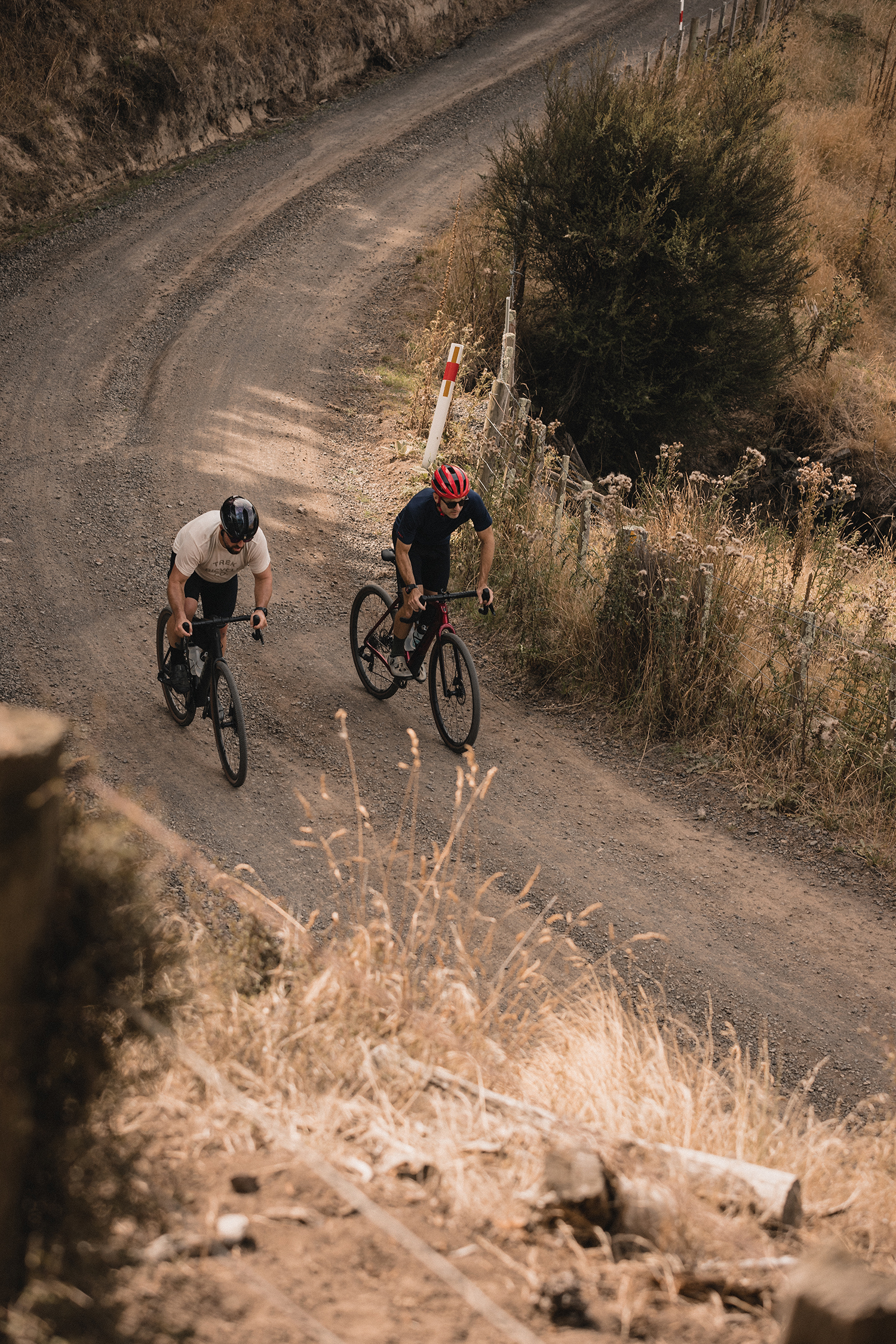
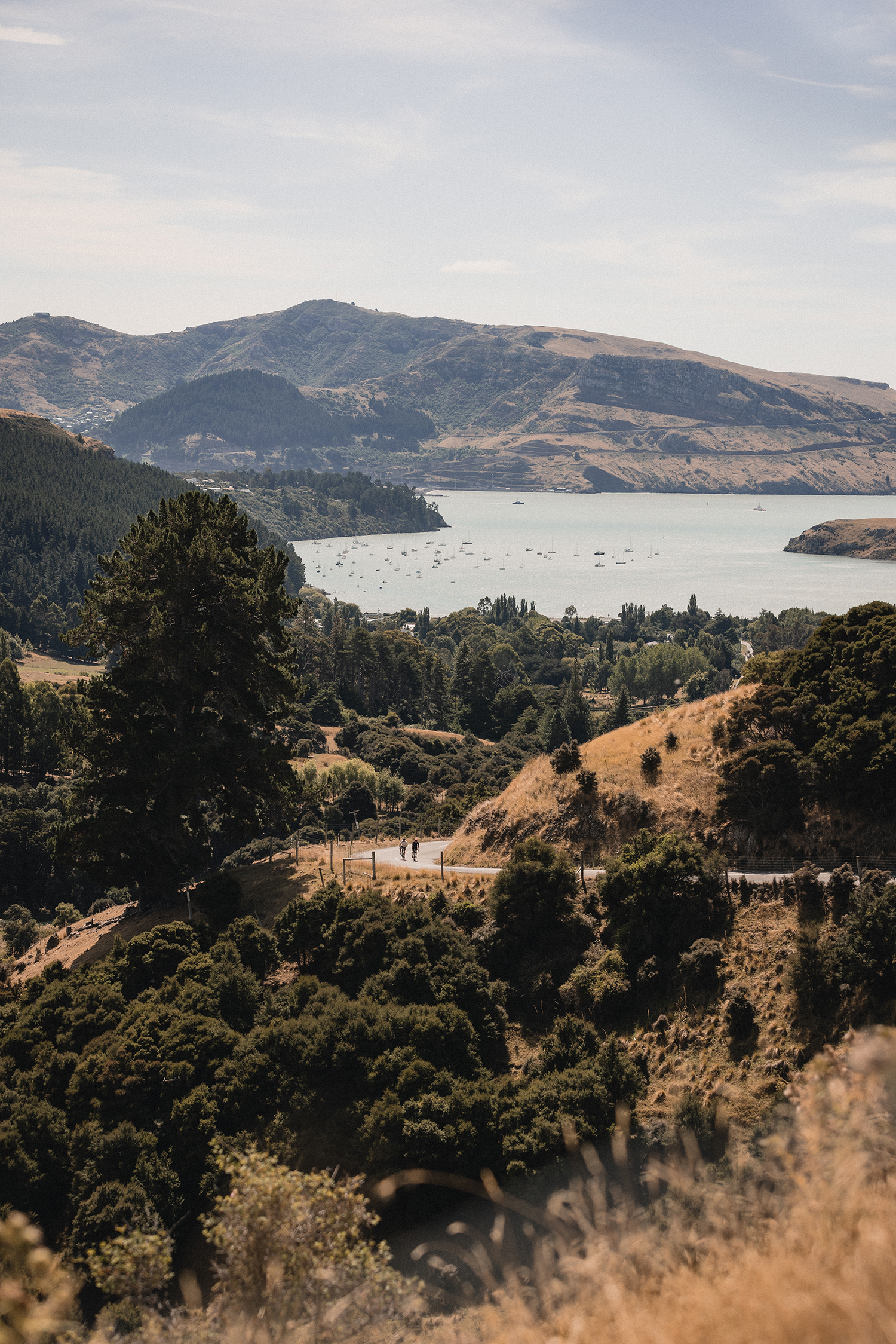
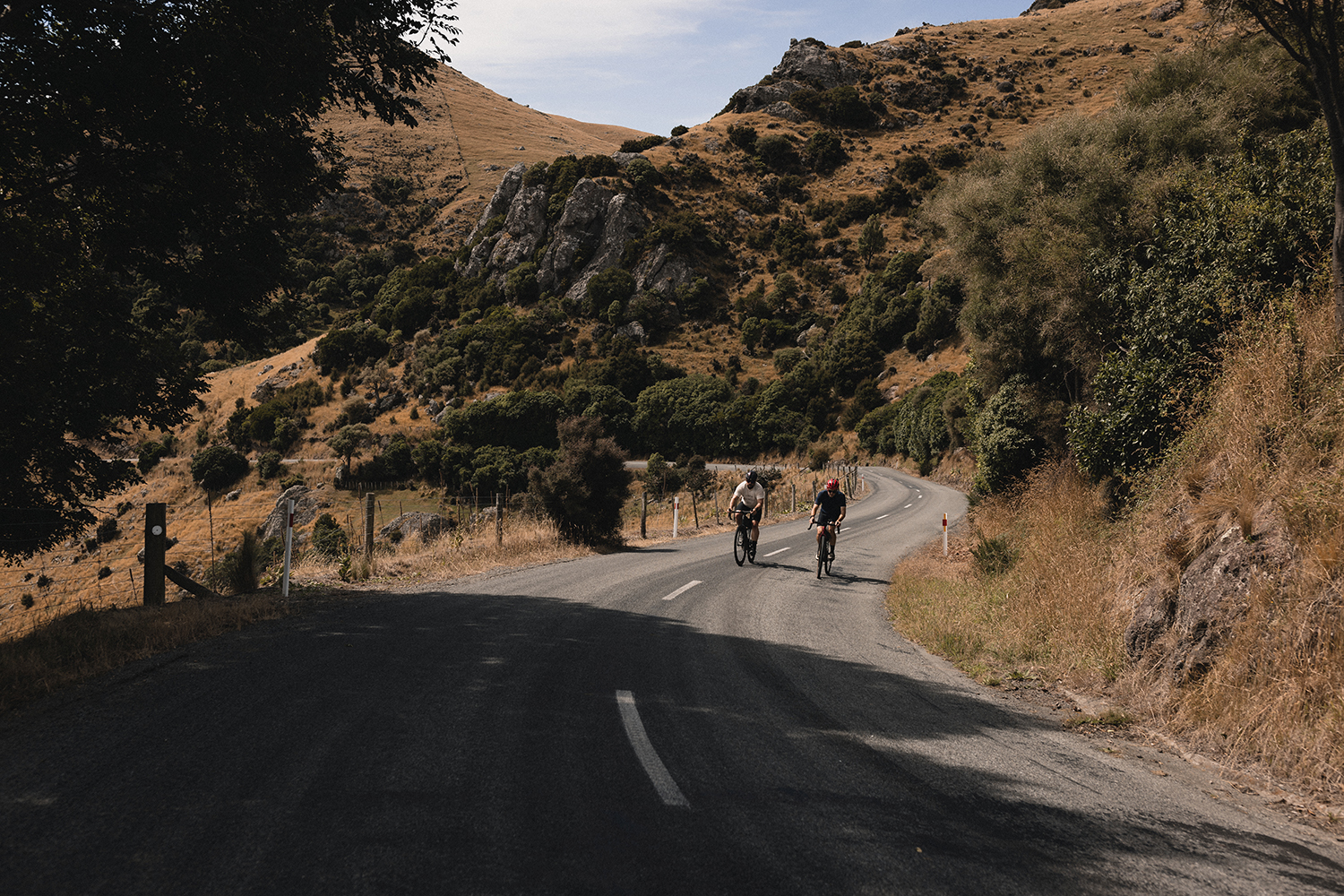
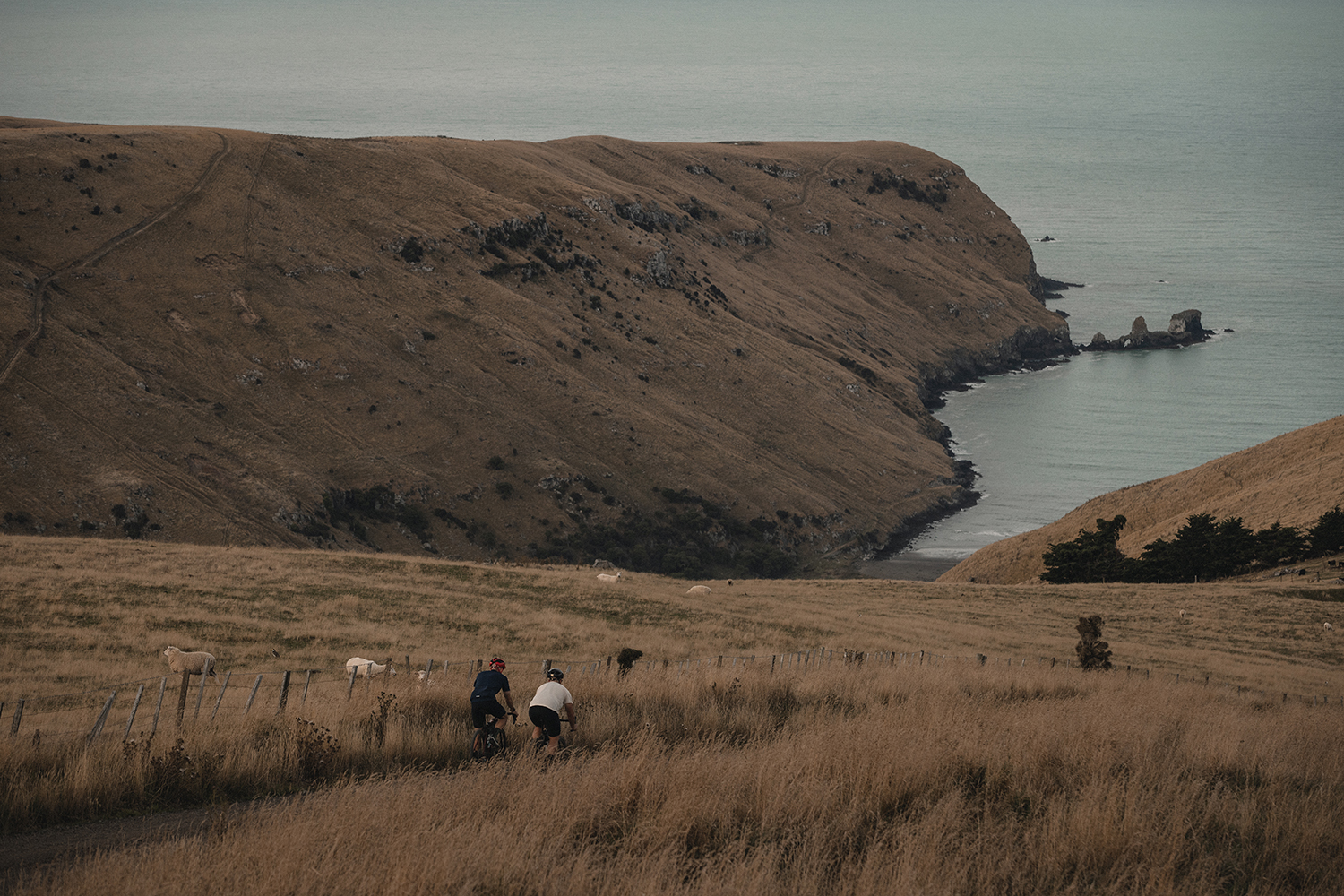
Ride Tales: Day One –
Off the plane and out of ‘door number three’, I spotted Liam with three bike boxes, multiple gear bags, and his cell phone pressed to his ear. The taxi company operator on the other end of the phone told us that the van we needed would be “a very long wait, maybe 15 to 20 minutes”. We laughed, commenting that that was quite a normal wait for a taxi in suburban Auckland. Ten minutes later, our taxi arrived, not quite the van we were expecting, but after some ‘bag Tetris’ we managed to get all three bikes and associated bags in the back. Magic!
The following morning, with no real urgency to get out of town, we took in a long and hearty breakfast at the Sudima, where we’d stayed the night, and ran over our plans for the coming days, as we enjoyed our ham hock and coffee.
Meandering out of Ōtautahi on a balmy Sunday morning is a sight to behold. Sea to our left, and Port Hills to our right, we rolled along the bike path to Sumner beach, stopping to take in the views and watch people enjoy a late summer’s morning at the beach. Volleyball, touch rugby, beach cricket and sandcastles – it was a classic kiwi summer vibe in full effect. But for us, we had places to be and gravel roads to ride, so we pressed on.
The solid grunt up and over Evans Pass Road was quickly forgotten as we descended the fresh tarmac into our destination of Lyttelton. The portside town is only 20 minutes from Christchurch central by vehicle via a tunnel, or around 25km – and a lot more calories burned – the way we came. The cafes were buzzing, shops were humming and people were everywhere, making the most of the stunning weekend. This place has an eclectic vibe and really owns it.
Crossing on the ferry to Diamond Harbour, we were eager to get to the ‘meat-and-potatoes’ of our mission: the gravel roads of Banks Peninsula. But first we had to get to Laverick’s Bay for the night. There was a good distance between where we docked and our destination.
Checking the topo map on my phone, it dawned on me that the next few hours would be spent either climbing or descending – Banks Peninsula doesn’t suffer fools. The ride from Diamond Harbour to Purau gave us a taste of things to come; nothing too serious, just some stunning midday views atop a meandering climb, followed by a cruisy descent – we were on a mission though, so we cracked on, eager to get off the tarmac.
Heading out of Purau, en route to Port Levy, things got real. The road seemingly tipped up in front of us, with no sign of the summit. Up we went. The heat of the day was kicking in, and the climb persisted. I tapped out a steady pace, trying to keep a rhythm between wiping sweat from my brow and sipping my water bottle. With 6km and 430m of vertical climbing, and pitches of 16%+, the climb was no joke – but it did set the tone for things to come! The vista from the summit was simply stunning, with endless views in every direction. Snacks were devoured as we rolled into the descent – in my case, a unicorn-flavoured LCM snack bar, a kid’s favourite, but also ideal for a day in the saddle (they’re pretty much just rice and sugar).
Departing Port Levy and over-eager to get on the gravel, we took a wrong turn. Thankfully, a couple of kilometres later we decided to heed the warnings from our navigation devices and got back on course. Continuing towards Pigeon Bay, we cautiously avoided one of the locals towing a freshly filled water tank on a far-too-small trailer with bulging tyres looking like they’d burst at any second. We watched him wobble around the next corner, listening for a crash – it didn’t come, so we plodded on.
It’s always a good omen when you see a ‘narrow road, limited passing, not suitable for towing’ sign – it may as well say, ‘good times ahead’. I wouldn’t say we cracked on as such but, again, we ground our way up the climb; the slower pace allowing lots of looks back over our shoulders to where we’d just been and, of course, some obligatory photos of the bay. This was ‘Champagne Gravel’ at its finest. No need to be spotting lines to avoid obstacles or rocks, just a smooth rolling surface with a bit of a crunch to it. Up, up, up, and up a bit more, then snack time. This time Pop-tarts, a little-known (in NZ) snack food from the USA and, again, full of sugars and processed nonsense – ideal sustenance for a long day of pedalling.
Making it to the high point of this leg, just below the summit of Wild Cattle Hill, we stopped for lunch, drained our bottles, and moaned about the heat. As we set off again, a white Ute rolled up, window down, elbow resting on the windowsill, and a big grin across a farm-
weathered face behind the steering wheel. A local farmer heading to move some stock stopped in for a yarn. If you Google image searched ‘Banks Peninsula farmer’ you’d probably see a gentleman like this: Swandri shirt rolled to the elbows, well-worn stubbies, woolly socks, and boots that had probably been on their last legs for years. What some might call: a real man. After pleasantries, we delved a little deeper, and it turned out he had farmed the hill for many years. Although his son now looks after the place, he was away on holiday, so he’d stepped back into the farming game for a few days to tend the flock. He was friends with the owner of the place we were destined for the night. Laverick’s Bay was a real gem he reckoned; time would tell. Noticing Liam’s thirst, the farmer offered up a few bidon fills from his water chiller sitting in the Ute tray; unrestrained, it must have been sliding all over the place as he drove the steep hills around the area. With a couple of toots he was off, leaving more questions than answers.
Into another demon descent, we headed down to Pigeon Bay. A bit steeper this time, and with silly speed on tap, I again had to keep a lid on it so as not to lose it on a corner, or into an oncoming vehicle. Deep into our day, we left Pigeon Bay, up a heck of a climb. Stopping at the top, we checked our planned route and considered our timing – it was getting toward the evening, and we really wanted to make it to our digs before dark to make the most of the place. We pressed on, hoping the cloud that had rolled in would dissipate and give us the sunset in all its glory.
Turning left off Summit Road, into Cameron’s Track, we decided all was lost on the sunset front and continued on. Within minutes, the cloud behind us had broken and the skies were clear. The evening sun cascaded down the valleys, lighting up everything with its golden hues; the grass went from dry and flat, to golden and shimmering. This was a moment for the memory books, the sight truly one to behold. The Peninsula’s volcanic peaks and ridges seemed to stand to attention in the long evening light, watching over the many bays of the Peninsula.
We pushed forward and down into Laverick’s Bay; the final stretch of road down into the bay offering an almost European feel, with sweeping switchbacks and dire consequences should you slide off a turn. Our accommodation for the night was a cottage, dubbed ‘Laverick’s Bay Beach Cabin’ – a stylish affair, only a couple of hundred metres from the beach. The wood-heated spa was warm and ready to enjoy, and dinner was waiting for us to heat in the oven. After a hearty meal of lasagne and fresh salad, and a long enough dip in the spa for our skin to prune up, we clocked out – done for the day. This was living!
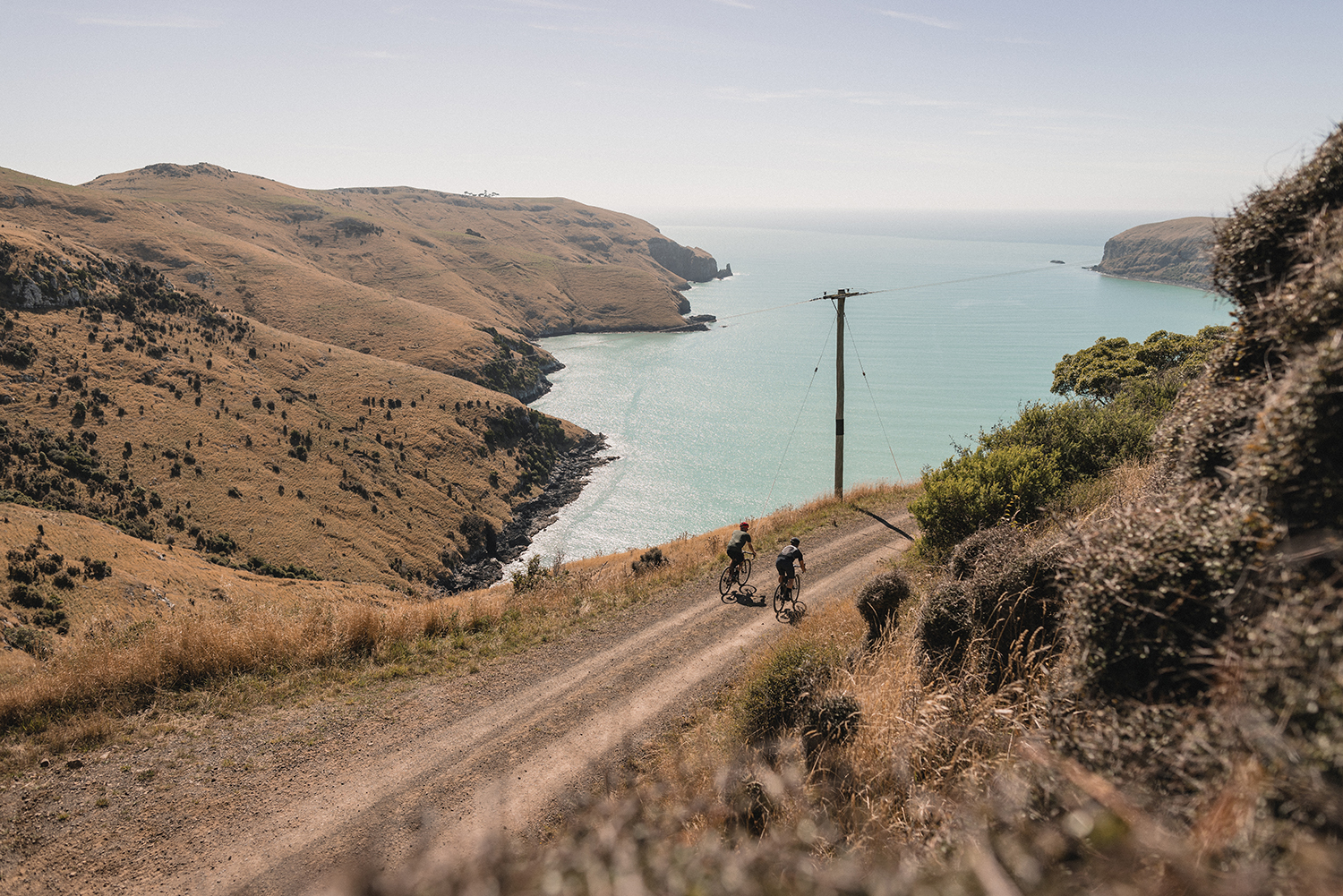
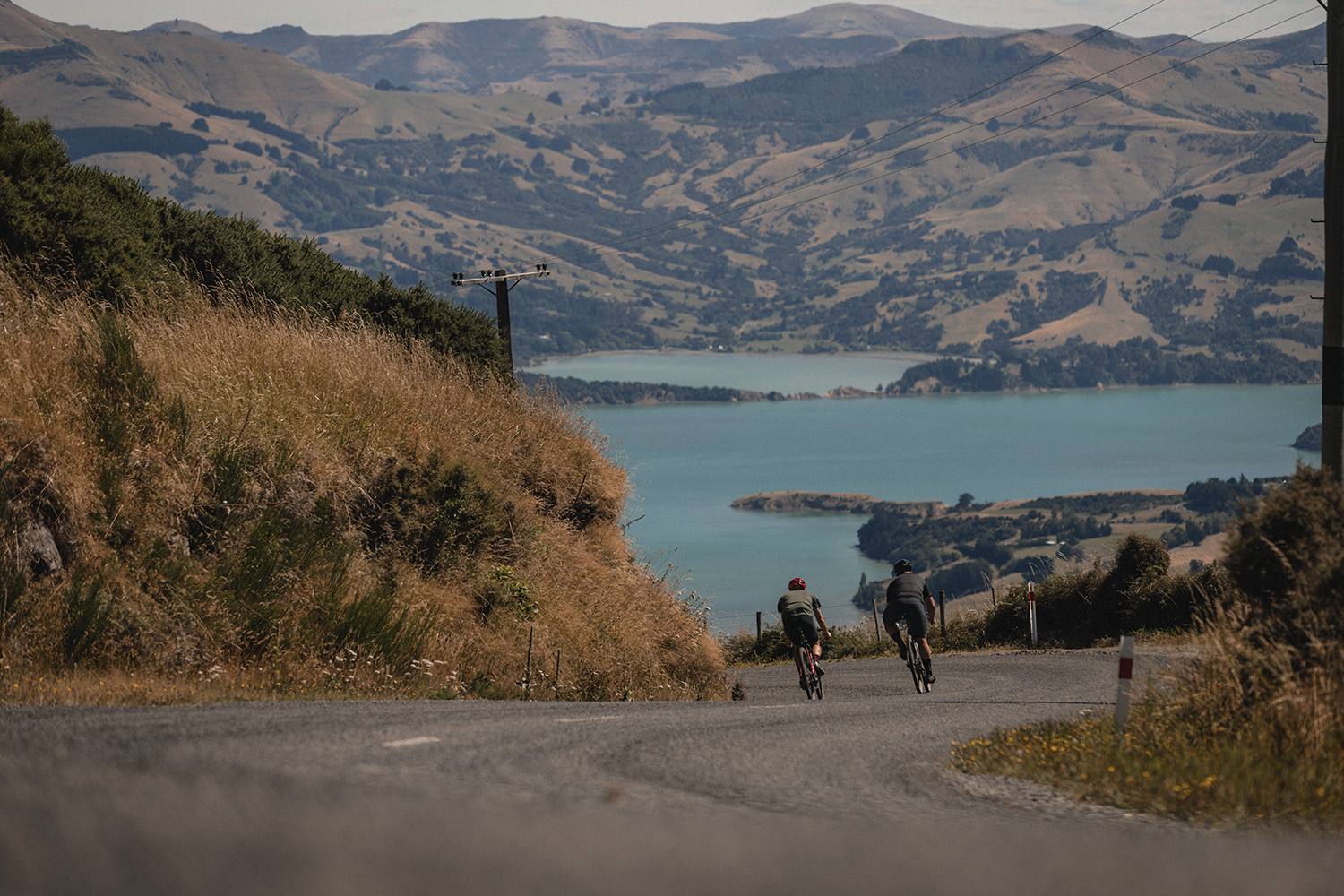
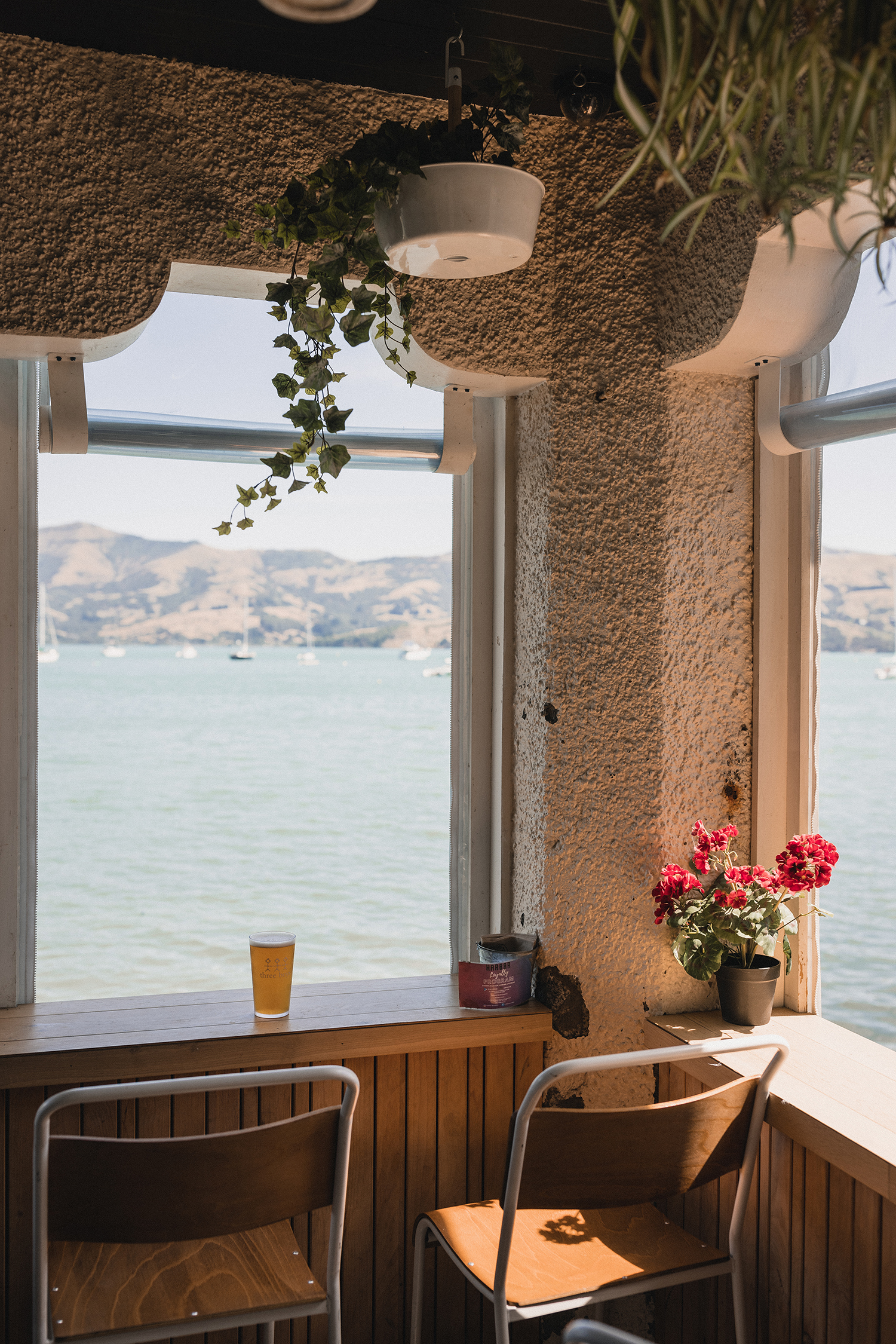
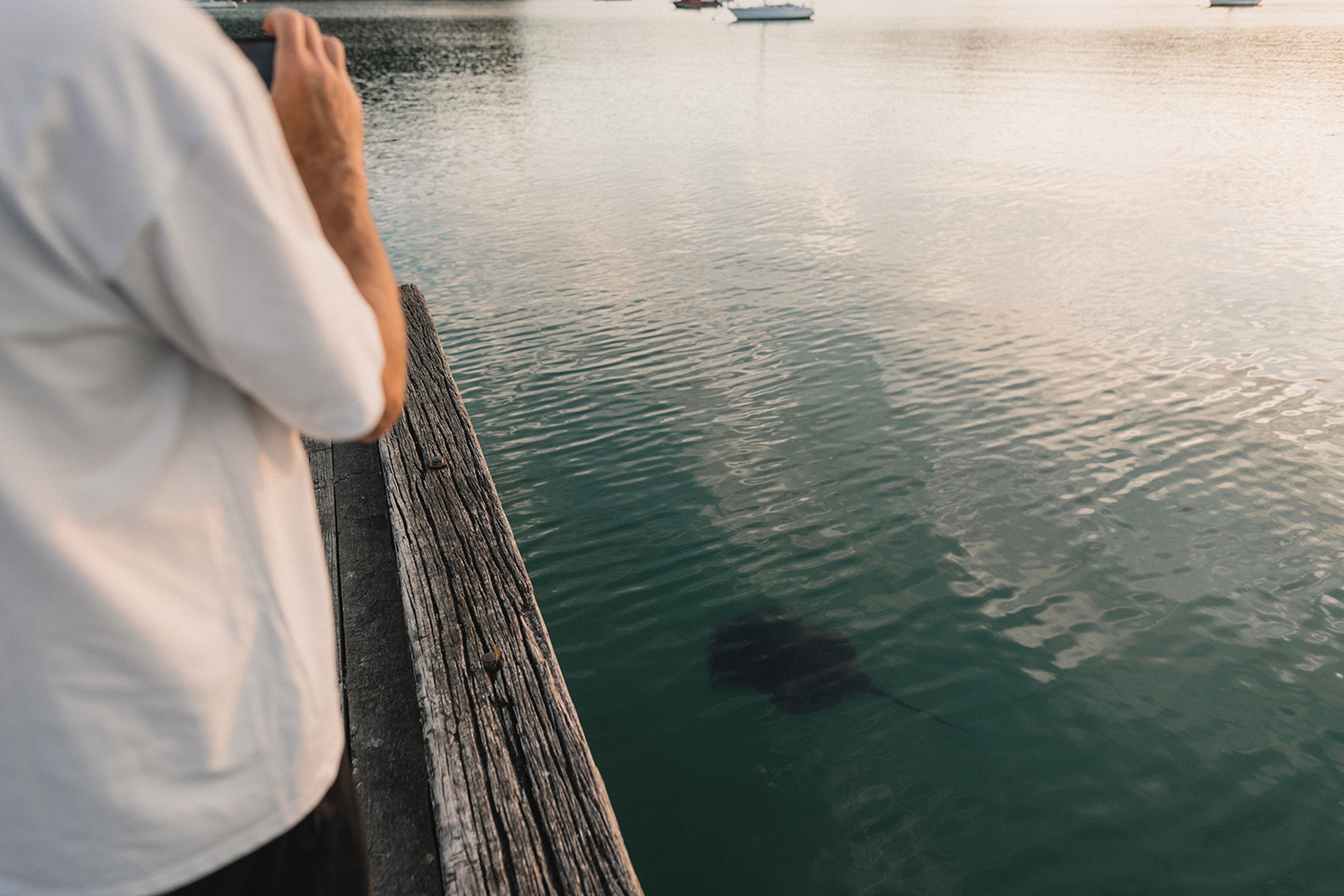
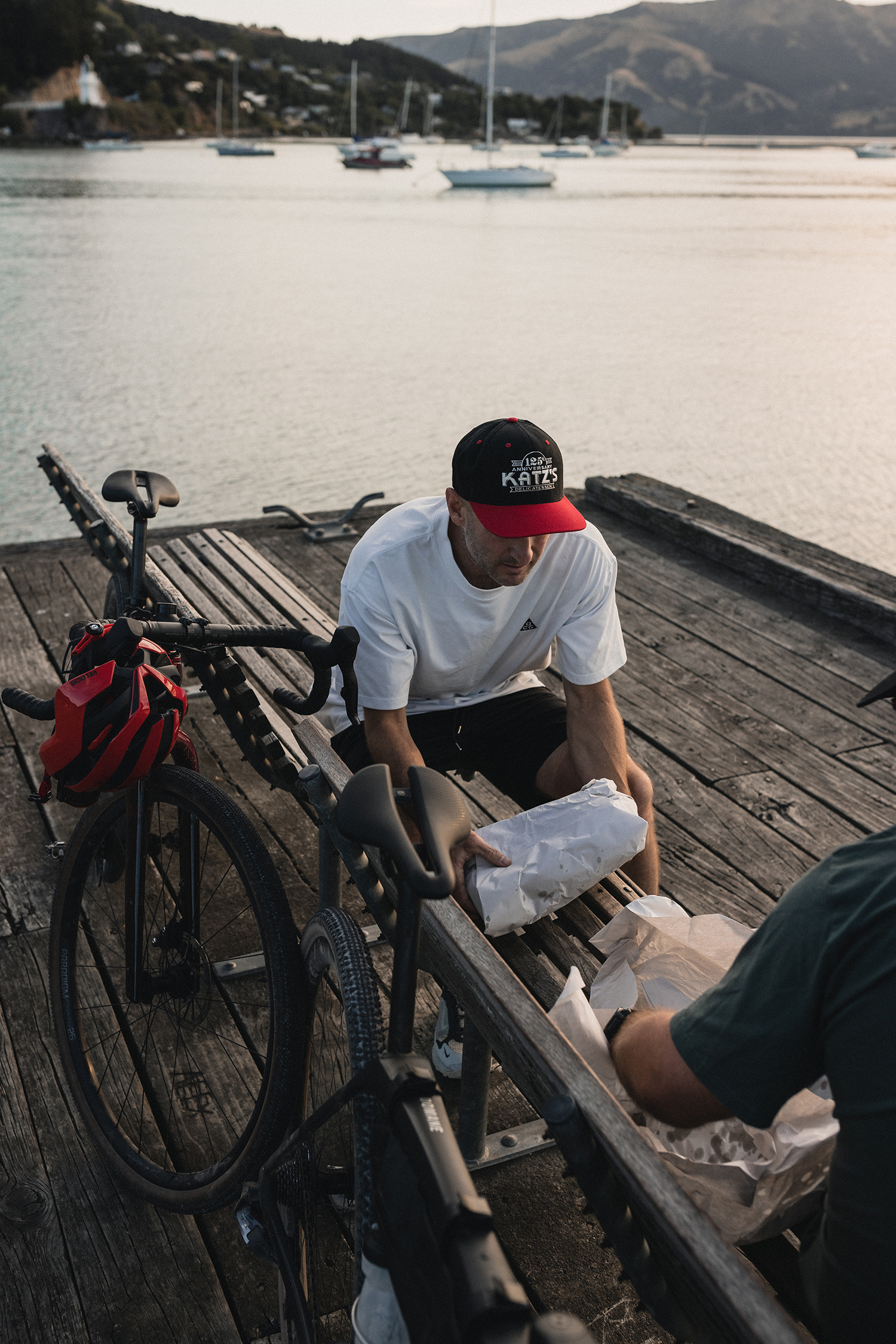
Ride Tales: Day Two –
Being our shortest day we were in no rush, making the most of our 10am checkout time. We downed a big fry-up – sausages, bacon, eggs and toast – accompanied by both espresso and aero-press coffee. Sheer luxury. With our stomachs full, we packed up and headed out of this secluded spot. Rolling out the door and immediately into a 200m vertical climb just after breakfast we somehow managed to keep our food down, and promptly dropped down to Le Bons Bay, fully warmed up and ready to attack the rest of the day.
Checking out the beach, we ended up chatting with a school group for a few minutes – turns out they were there on a school camp, how good! It’s small moments like this that make a trip like this special; your path intersects with people going about their own life, all with a unique story to tell. The bikes helps invite conversation and, with no real agenda, you can just stop, have yarns, or take in the scenery as you please.
Scouring the topo map during one of our stops, we found what looked like a track that may, or may not, have been ridable – perfect. After a slight detour from our planned route, we found the track, clearly marked with a ‘Foot Traffic Only’ sign – not ideal. We travelled back the way we’d come and onto the Long Bay Road descent into Akaroa. It’s sealed, but with a seemingly near-new surface, perfect gradient and disc brakes, we dropped like stones. The views across Akaroa Harbour, the speed, the warmth of the sun – what a way to finish our comparatively short ride. So damn good.
Akaroa was buzzing when we arrived in the early afternoon. Being a Monday, we figured everyone here was visiting, on holiday, unless they were working in a shop, café or bar. We knew we’d missed lunch so rolled straight off the descent to the Harbar, an intimate spot that sits over the water’s edge, right on the harbour, with uninterrupted views out the front windows. Some chunky fries and a pint of fine Pilsner filled the gap. We certainly weren’t the usual punters to frequent the place, with our sweaty Lycra and cycle shoes – who knows what we smelled like!
Bellies full, we checked into our digs (Tressori Motor Lodge), grabbed a towel and some togs and headed for a dip. Being that we were in unfamiliar territory, I expected the water to be near freezing. It wasn’t, and much to my surprise we swam for quite a while, enjoying the near tepid temps.
As the sun began to dip, fish and chips on the wharf were in order and, as we chomped on one of its distant cousins, a huge stingray glided by, right beside where we’d been swimming earlier. Once again, Banks Peninsula put on a stunning sunset show for us, and we headed to Harbar for a tipple to finish the day. We sat and watched as the haze of the day burned off and the sun began to set; the colours changed behind the silhouetted mountains reflecting onto the water.
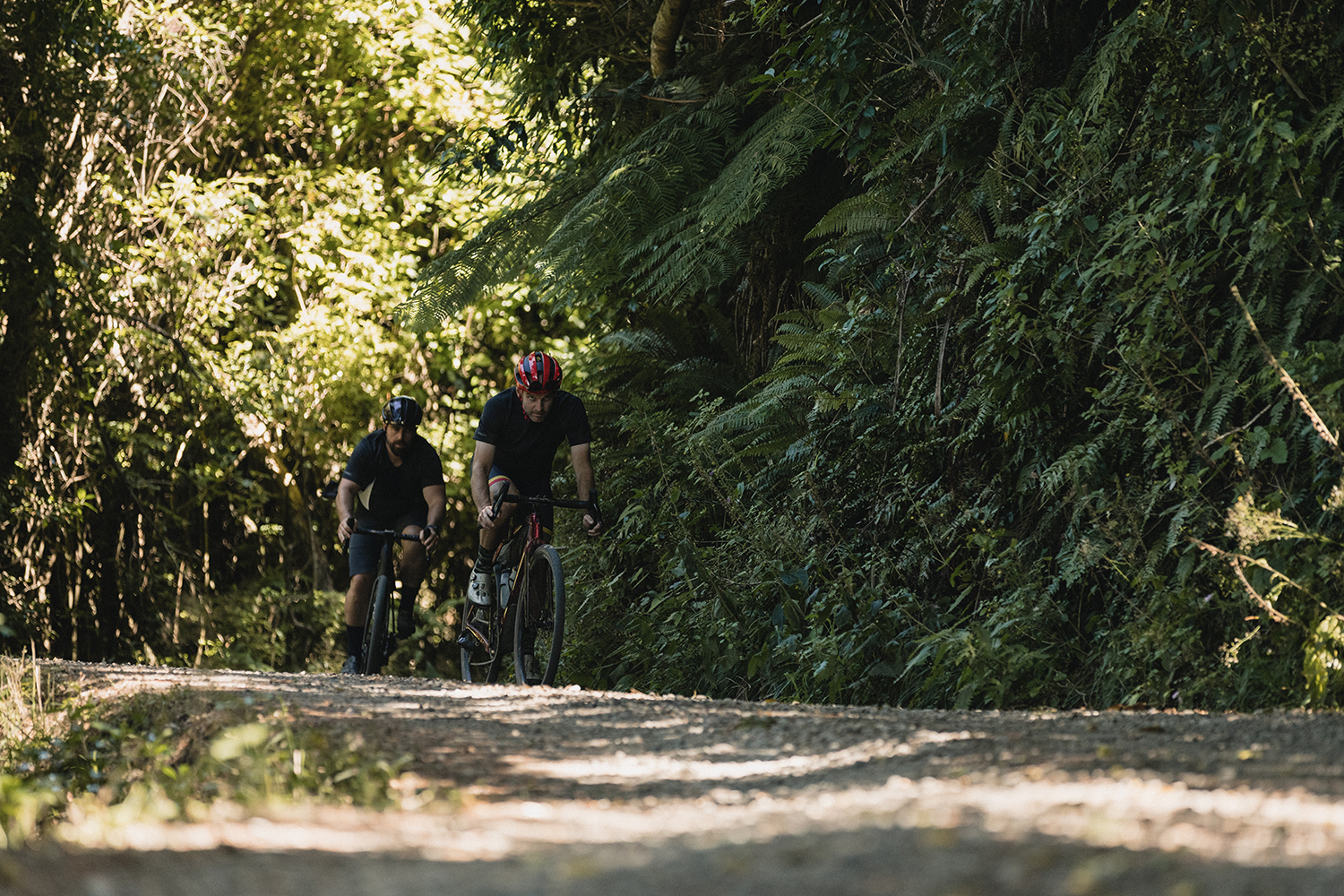
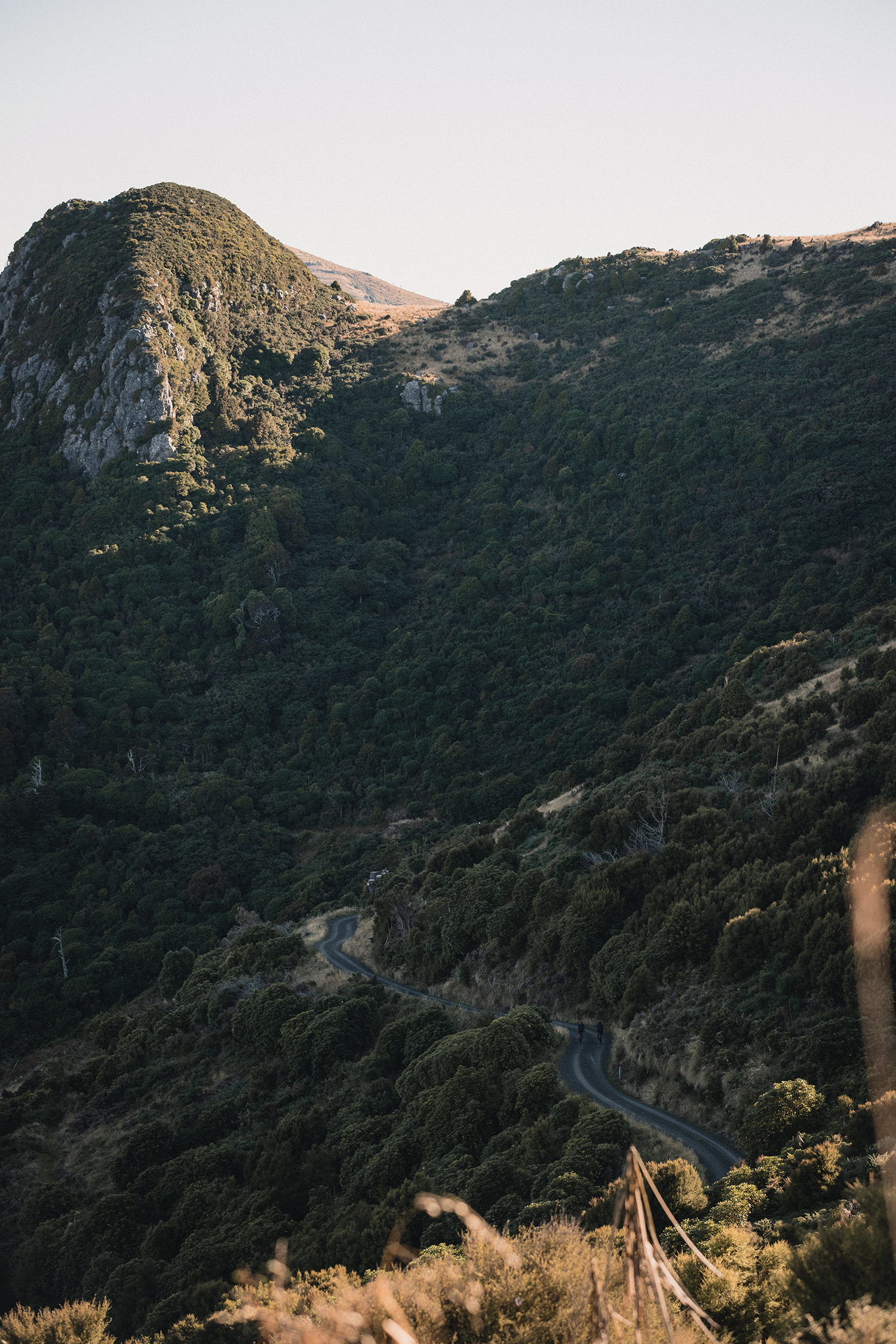
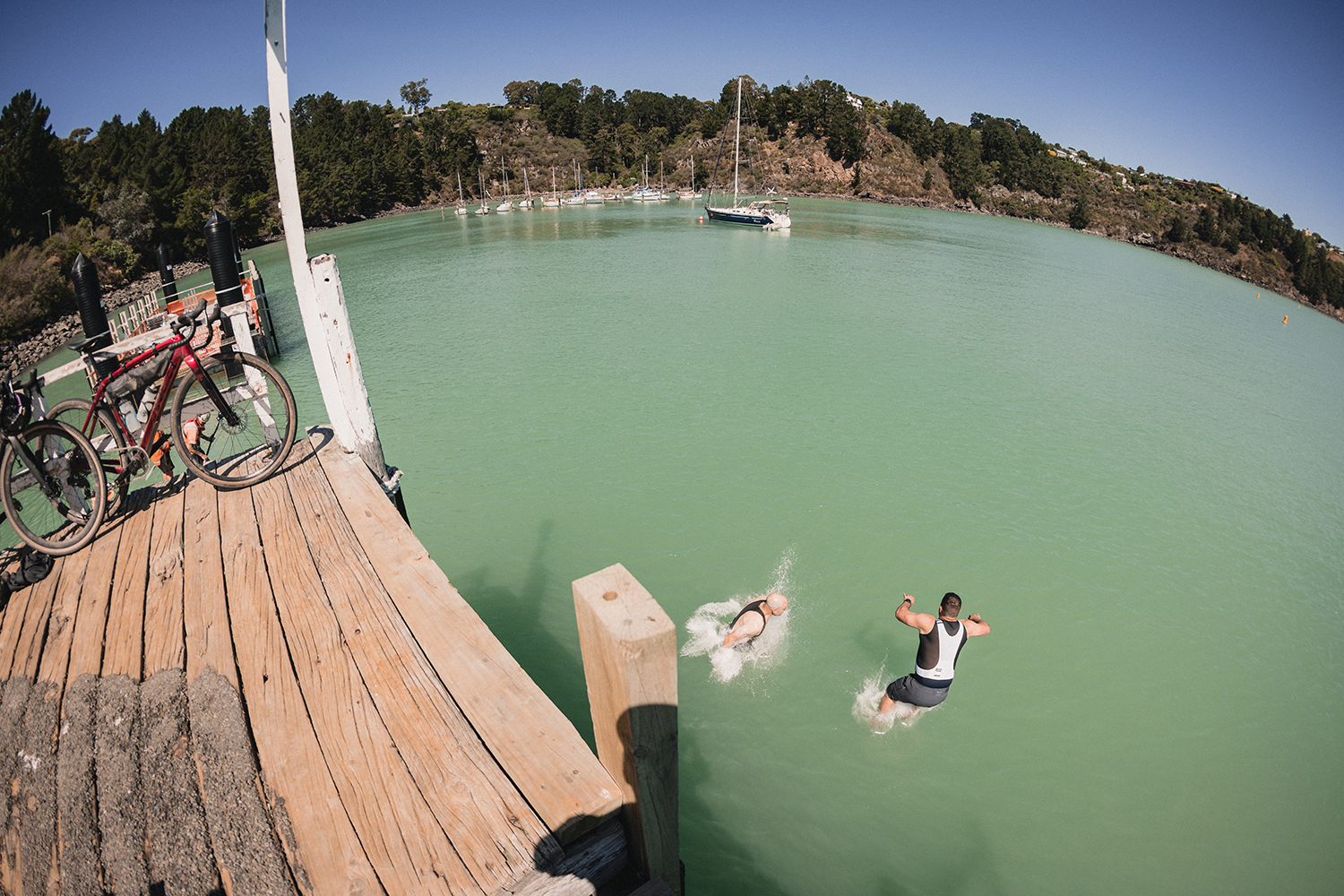
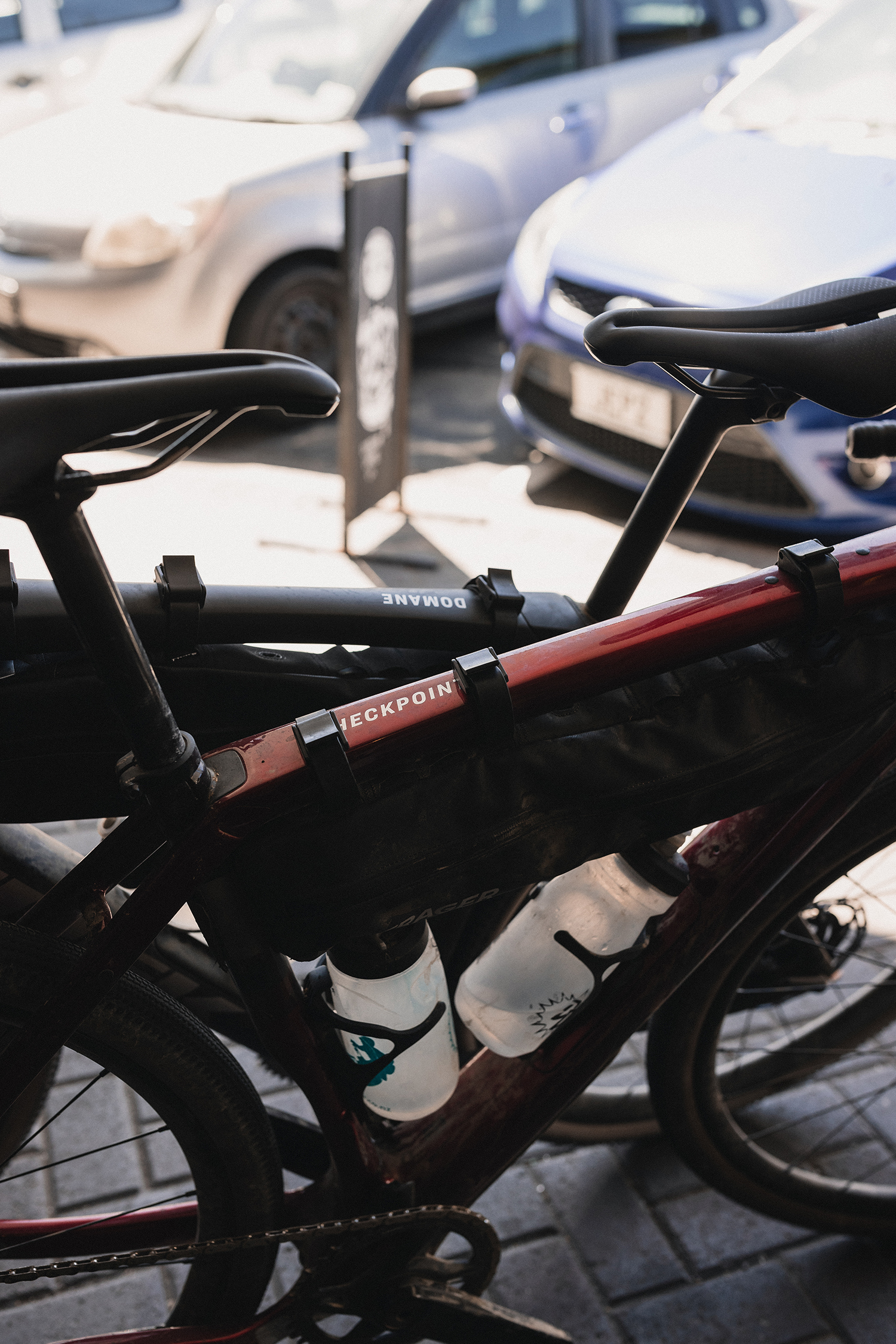
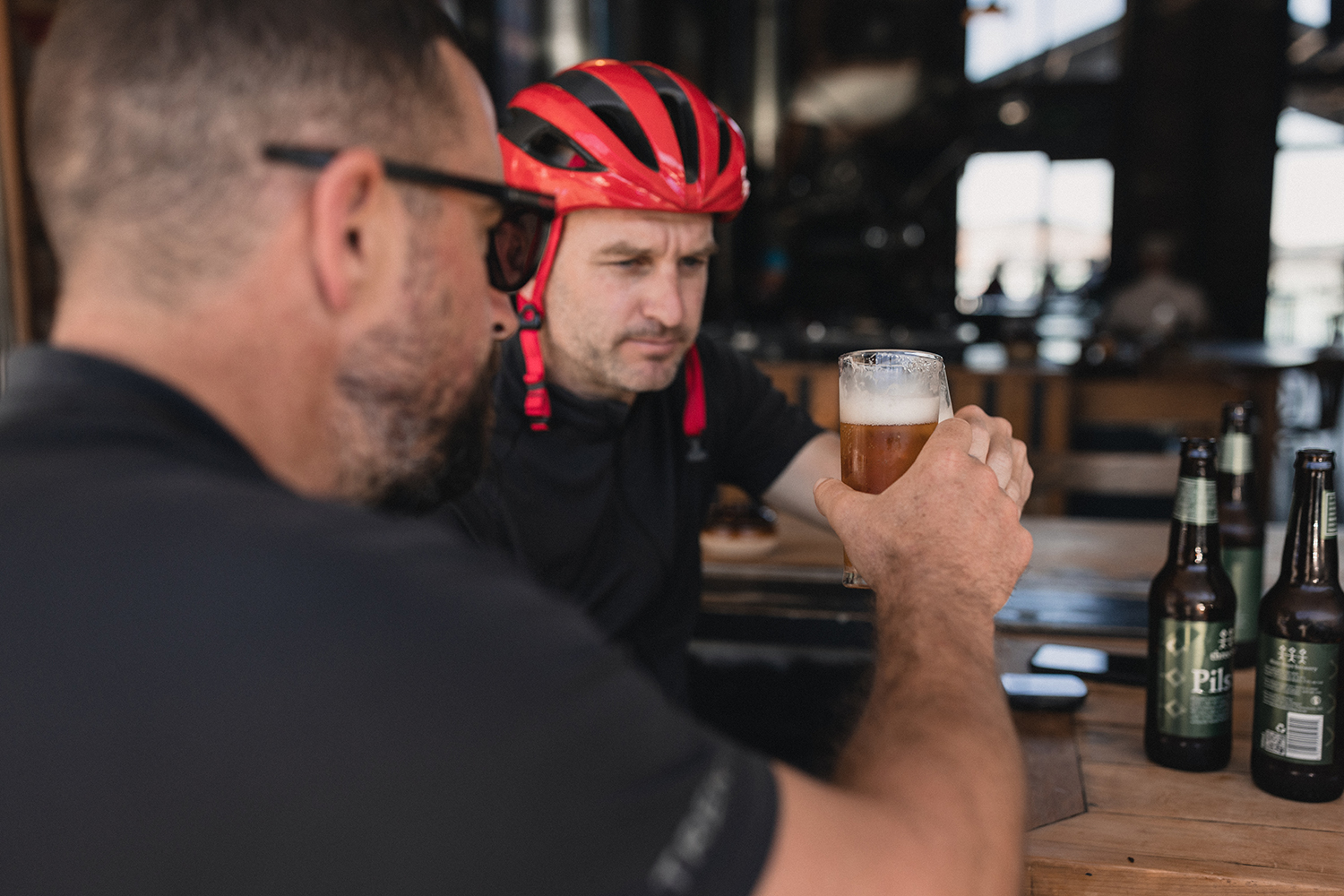
Ride Tales: Day Three –
Woken by a-way-too-early alarm, we quickly packed up, demolished two bowls of Nutri Grain each, and set off once again – this time in the dark. Around the bays and over the rollers we went – fortunately with no huge climbs – eventually making it to Wainui. Our timing was impeccable: just as the sun started to rise, we began to climb. Gradually, we rounded Carews Peak, just under 800m above where we began – a solid way to start the morning! Meandering our way along Bossu Road, we absorbed the vista of volcanic outcrops and the sea to the left and right of the ridge we followed, all adding to the uniqueness of the morning.
Starting down towards Little River, we hooked a hard – near-180-degree – right-hander and continued on the gravel. The road narrowed and gradients tipped; the descent was amazing and seemingly never-ending. I discovered later it was over 10 kilometres and dropped 730 meters. Halfway down the hill, we passed a guy on the end of a weed eater. ‘He looks familiar,’ I thought, hauling on the anchors. I was right – Callum used to own the bike shop just up the road from my house in Te Awamutu! NZ really is a small place. A quick yarn, then we finished our drop into Little River. On the single descent, we’d come through grassy farmland, plantation pine and native trees; covering every surface from smooth gravel right through to rutted chunder and, finally, sealed roads.
We discussed our plan for the remainder of the day over scrambled eggs, long blacks and OJ’s. We’d planned to head back to Christchurch, taking in the lengthy bike path from Birdlings Flat, just out of Little River, then skirt around the back of Lyttelton and over the Port Hills, returning to our start point through Victoria Park. Callum had recommended heading “straight up the guts” from Little River, up Western Valley Road, a nearly 700m climb which began on the seal and finished on gravel. Looking back, I figure the reason the road was sealed is that it is so steep, any surface not stuck down by tar would surely become a mess once driven on. We were once again cooking, and the heat radiating off the road just made matters worse. The view down the valley behind us took our minds off things temporarily and, after some graft, we were at the top. More snacks, a quick can of ‘the Red Doctor’ (Coke), and we descended towards Port Levy once again, soon to complete our loop of the Peninsula.
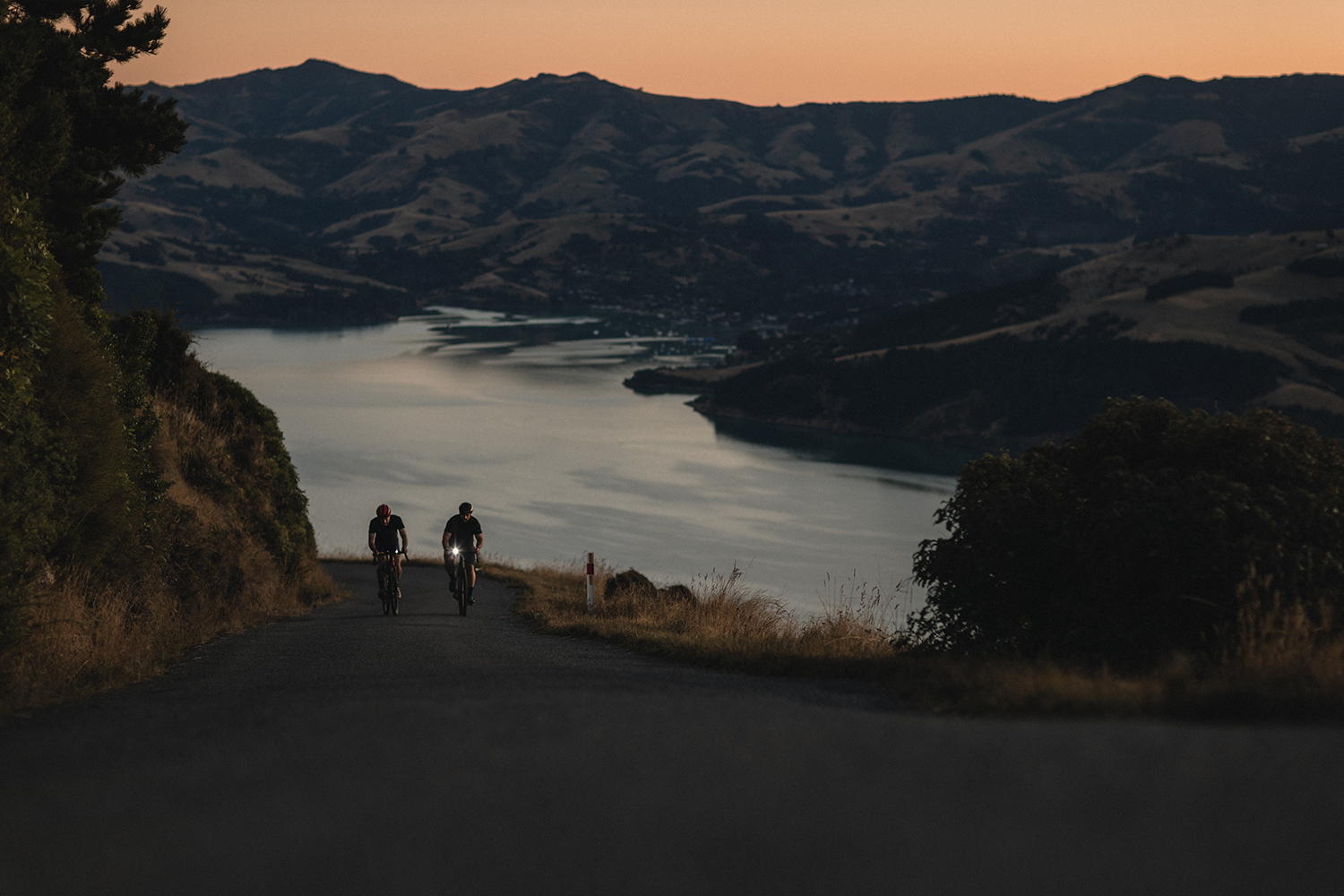
One more solid climb, a bit of a bump, and we were back in Diamond Harbour – half an hour before our ferry crossing back to Lyttelton. We grabbed an ice cream, devoured it quickly before it melted, then headed to the dock to do some bombs off the wharf while we waited for our boat ride back to civilisation. After a short ferry crossing we docked in Lyttleton and headed for a little something to wet the palate. Lyttleton Coffee Company supplied us with a few tall bottles of Pilsner from local Ōtautahi brewery, Three Boys. Vinyl beats played as we sipped our beers in the afternoon sun. We yarned and started reflecting on the places we’d experienced and seen in the past few days.
Although we still had to get back to Christchurch from Lyttelton, our adventure felt like it was winding down and, unfortunately, would soon be ending. Retracing our pedal strokes, we climbed up Sumner Road, but turned left into Summit Road at the top this time, instead of down Evans Pass to Sumner. Summit Road is such a unique experience; we are going out on a limb to say there’s nothing quite like it in Aotearoa. Riding along the ridge line on a closed road with city and sea on one side, and Banks Peninsula in all its glory on the other, is simply stunning. Looking at the Peninsula with its peaks and bays, you can see why our legs were feeling achy, however, the pain was well worth it.
We dropped into the Huntsbury track and descended back to the flat lands of Christchurch, a far cry from the climbing of the previous days. Perhaps our manner was more relaxed on this side of the trip – either way, once we were in the streets of suburban Ōtautahi we soon realised that time had gotten away on us. The charm of five-star hotel living enticed us and we headed for Sudima. As we wheeled our bikes to the check-in, the receptionist looked at us in a way that indicated a real scrub up was needed. Emerging from our hotel digs like new people, we cherished our journey with a large meal and glass of wine followed by an early night’s kip.
The time spent exploring Banks Peninsula was indeed hard, but so damn rewarding. The compact size of the Peninsula – with its many nooks, crannies, volcanic peaks, endless coastline and beautiful bays – makes this place truly distinctive. Often, as you would’ve heard many times, it’s not about the destination but the journey – and this is one place that lives up to that statement. This journey by bike helped us ‘escape’ a little, slowing us down so that we could take everything in and connect with people and this remarkable whenua.

